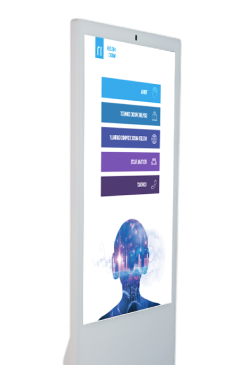

Event Solutions

Our Work

Three Key Types of Digital Signage Content
As we’ve already said many times before, the type of digital signage content you build for your network is (or should be) extremely dependent on the purpose of the different screens, the envisioned audience (and its purpose), and the wanted effect on that audience—in other words, on your digital signage content plan. There are three fundamental types of content and how and where they each can be effective. Video media Most folks are familiar with video content—brand videos, promos, talking heads, and so on. You can use this type of digital signage content in certain surroundings, but, again, it has to be the right place for this to be effective. A very effective substitute for video content is motion graphics, which can frequently convey a marketing message more rapidly and simply. This type of video content is normally online, but lately, it is also showing up more on TV and broadcast mediums. That’s because these are turning into more of a glimpse media marketplace where individuals can ignore or skip through ads. Motion graphics depend on animated typography and iconography and allow companies to still communicate with consumers, even as they fast forward through advertisements. Because motion graphics aren’t video, they may grab the attention of your audience—buyers have learned to overlook videos that have the look and feel of ads. Vibrant, data-driven content Vibrant content, on the other hand, is shaped and displayed “on the fly” based on proper data. For instance, you might have a 10-second spot that enthusiastically pulls images from an Instagram feed or text from a FB feed. You might also use information, images, and current pricing from your portfolio system to construct an in-the-moment promotion. Or perhaps you tap the local weather forecast statistics to promote coats or sunshades. The opportunities are endless. Lively content can include brand components, logos, motion graphics, messages that fly across the screen, and more—all constructed by an HTML application and based on data in the here-and-now rather than being formed in advance. Not only can this method be valuable for customers and guests, but it can also be vital for employee-facing signage where you might deliberate visualizations of content like performance metrics or shopper reviews. Nonetheless, whether the information is from internal or third-party sources, the system can use the statistics and assets to shape a piece of relevant media content in real-time. Interactive digital content As we mentioned previously, interactive content doesn’t belong on every digital sign in every setting. Where it is suitable, however, it can be highly attractive and effective. Clearly, interactive content necessitates user input, commonly a touchscreen or other device. Early interactive content included “kiosk” type applications, such as retail product consultants or wayfinding systems like you’d find in a mall or airport. Are you thinking about digital signage? We can help guarantee you get the best possible ROI from your digital signage as possible.